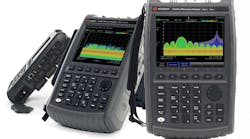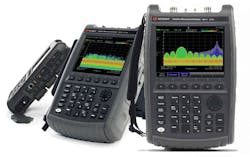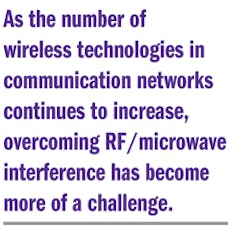As the number of wireless technologies in communication networks continues to increase, overcoming RF/microwave interference has become more of a challenge. Quality of service is determined by the extent of interference management. Real-time spectrum analysis (RTSA) enables users to detect challenging signals and solve network problems, making RTSA essential for field testing. In the application note, "Overcoming RF & MW Interference Challenges in the Field," Keysight Technologies discusses interference in various networks before delving into RTSA technology and its key performance indicators.
The note begins with a description of interference in commercial wireless networks; both internal and external interference are explained. LTE networks, which must have a sophisticated and efficient interference management scheme, are examined in detail. Microwave backhaul is then discussed, with the application note stating that approximately 50% of the world’s base stations are connected to backhaul with a microwave radio. Microwave radio network interference can be produced by reflection and refraction, as well as the usage of unlicensed frequency bands. The challenges associated with aerospace and defense communication systems and public safety systems are explained as well.
Several important RTSA performance indicators are mentioned, such as real-time bandwidth, minimum signal duration for 100% probability of intercept (POI), and dynamic range. Moreover, two types of challenging interference in the field—co-channel and uplink interference—are touched upon, along with an explanation of how RTSA can help detect both types. The application note also states that component failures lead to many instances of interference, with further discussion of how component-based problems can be prevented. Lastly, the document concludes with a description of Keysight’s FieldFox handheld analyzers.
Keysight Technologies, 1400 Fountaingrove Pkwy., Santa Rosa, CA 95403; (707) 577-2663



